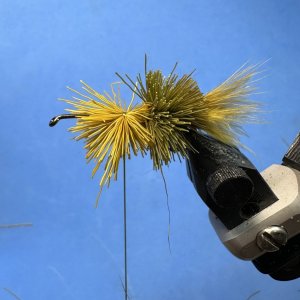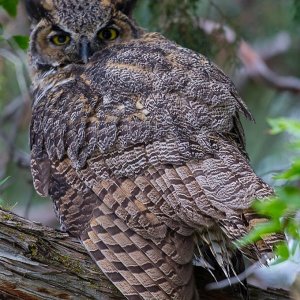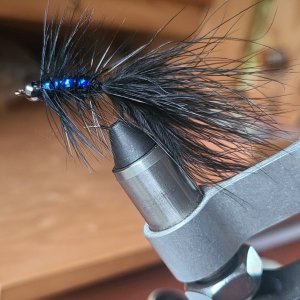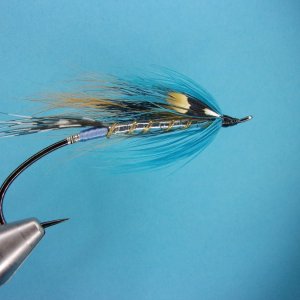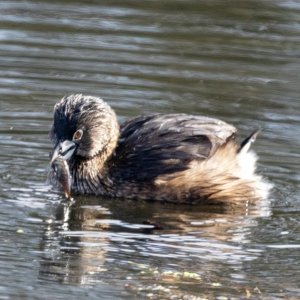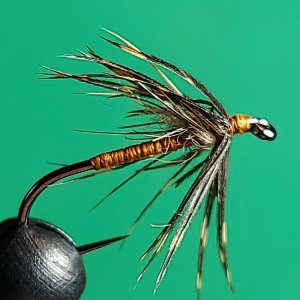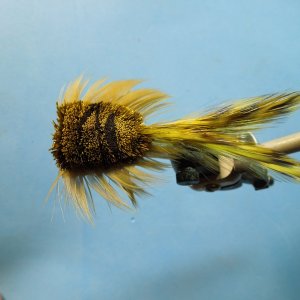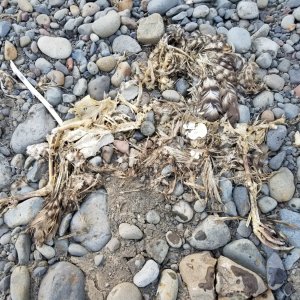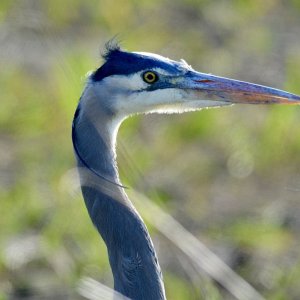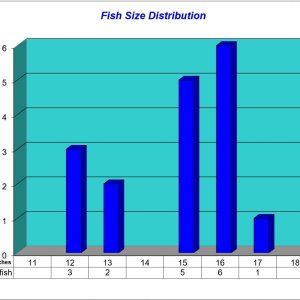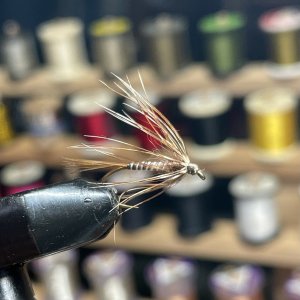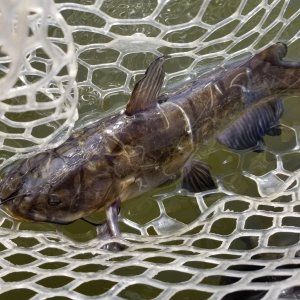I'm looking to purchase my first sinking line for lake fishing. I'm looking to fish with streamers, but mostly plan on using it for slow stripping in chironomids down deep (around 16'-20'). I'm a little lost as to which sink rate I should get for chironomid fishing. I'm looking at getting Rio's Fathom line (5 weight) which has sink rates of 3, 5, and 6 IPS. I was thinking at first about getting the 6 IPS, but I am worried that during a slow/very-slow strip in of the chironomid, the line would continue to sink towards the bottom. Is this nothing to worry about or should I go with a slower sink rate? What are the pros/cons of going with 3 IPS sink rate other than longer counting time for it to sink?
You are using an out of date browser. It may not display this or other websites correctly.
You should upgrade or use an alternative browser.
You should upgrade or use an alternative browser.
Recommended IPS for stillwater sinking line?
- Thread starter bluelines
- Start date
RCF
Life of the Party
How patient are you?
I use 6 ips to get that deep. I have not had an an issue with slow stripping and deeper depth. With that being said I am not sure what exactly is happening down there. So I strip some quicker and then let it settle down some if I not fishing nearly straight down.
I use 6 ips to get that deep. I have not had an an issue with slow stripping and deeper depth. With that being said I am not sure what exactly is happening down there. So I strip some quicker and then let it settle down some if I not fishing nearly straight down.
Welcome to the forum - You might do some digging in this site's search engine for deep water chironomid fishing techniques. Personally, for fishing 16' - 20' deep with chironomids, you've described the magic depth I prefer and I'm going to fish my Seegercator (quick release strike indicator). I don't favor a quick, full sinking line for chironomids unless I'm "dangling" (fishing the line vertically with the fly directly below the rod tip which can be deadly). Otherwise I fish a floating line for midges; with bobber or without bobber.I'm looking to purchase my first sinking line for lake fishing. I'm looking to fish with streamers, but mostly plan on using it for slow stripping in chironomids down deep (around 16'-20'). I'm a little lost as to which sink rate I should get for chironomid fishing. I'm looking at getting Rio's Fathom line (5 weight) which has sink rates of 3, 5, and 6 IPS. I was thinking at first about getting the 6 IPS, but I am worried that during a slow/very-slow strip in of the chironomid, the line would continue to sink towards the bottom. Is this nothing to worry about or should I go with a slower sink rate? What are the pros/cons of going with 3 IPS sink rate other than longer counting time for it to sink?
A buddy of mine was up in BC this past spring, he HATES bobber fishing and so had been researching what he calls "fishing naked", ie., long lining (floating line and a leader long enough to fit the bottom depth; in his case his leader was about 20' long). @Engee did really well using this technique catching some big BC rainbows. Here's a link for you: https://flyguys.net/fishing-information/still-water-fly-fishing/long-lining-chironomids.
Be well./Patrick
Ps. I don't care if that orange thing or orange and white thing is called a bobber or strike indicator but if it's orange and chartreuse, it's a Seegercator.
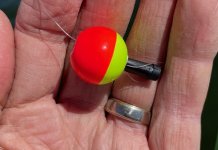
The real McCoy, a genuine Seegercator.
The articles on the forum by Tim Lockhart (https://pnwflyfishing.com/forum/ind...llwater-game-from-scratch-pt-1-gearing-up.33/) are a great place to start. He also authored two books that are a wealth of information on stillwater fishing and have helped me up my game. You can also peruse the lakes and fly-tying sub-forums on this site and learn a lot. I usually start with a sink 6 line. You can fish different depths by using different count-downs after the cast. But, I also have several other lines that I use depending on the situation.
Last edited:
I fish a type 6 most of the time. Often on keep it simple days I'll just take one rod with the type 6 and fish buggers, leeches or an olive willy. If I fish chironomids, it's under an indicator fished on a dry line like Buzzy mentioned, but usually it's just a smaller leech. If I'm fishing shallower lakes, or want to fish in the shallower water a lot, I like a 10' type 3 sink tip.
Look in the lakes and the beginners forums as this topic has been covered several times. And stick around, it will come up again, as folks get excited and antsy about the lakes opening in late february-march.
Welcome to the group.
Look in the lakes and the beginners forums as this topic has been covered several times. And stick around, it will come up again, as folks get excited and antsy about the lakes opening in late february-march.
Welcome to the group.
If I were you, I’d consider getting a Cortland Seek type 3 and a type 7 on sale for what you’d pay for one of those RIO lines.I'm looking to purchase my first sinking line for lake fishing. I'm looking to fish with streamers, but mostly plan on using it for slow stripping in chironomids down deep (around 16'-20'). I'm a little lost as to which sink rate I should get for chironomid fishing. I'm looking at getting Rio's Fathom line (5 weight) which has sink rates of 3, 5, and 6 IPS. I was thinking at first about getting the 6 IPS, but I am worried that during a slow/very-slow strip in of the chironomid, the line would continue to sink towards the bottom. Is this nothing to worry about or should I go with a slower sink rate? What are the pros/cons of going with 3 IPS sink rate other than longer counting time for it to sink?
Or, just get the type 5 and fill your gas tank and go fishing.
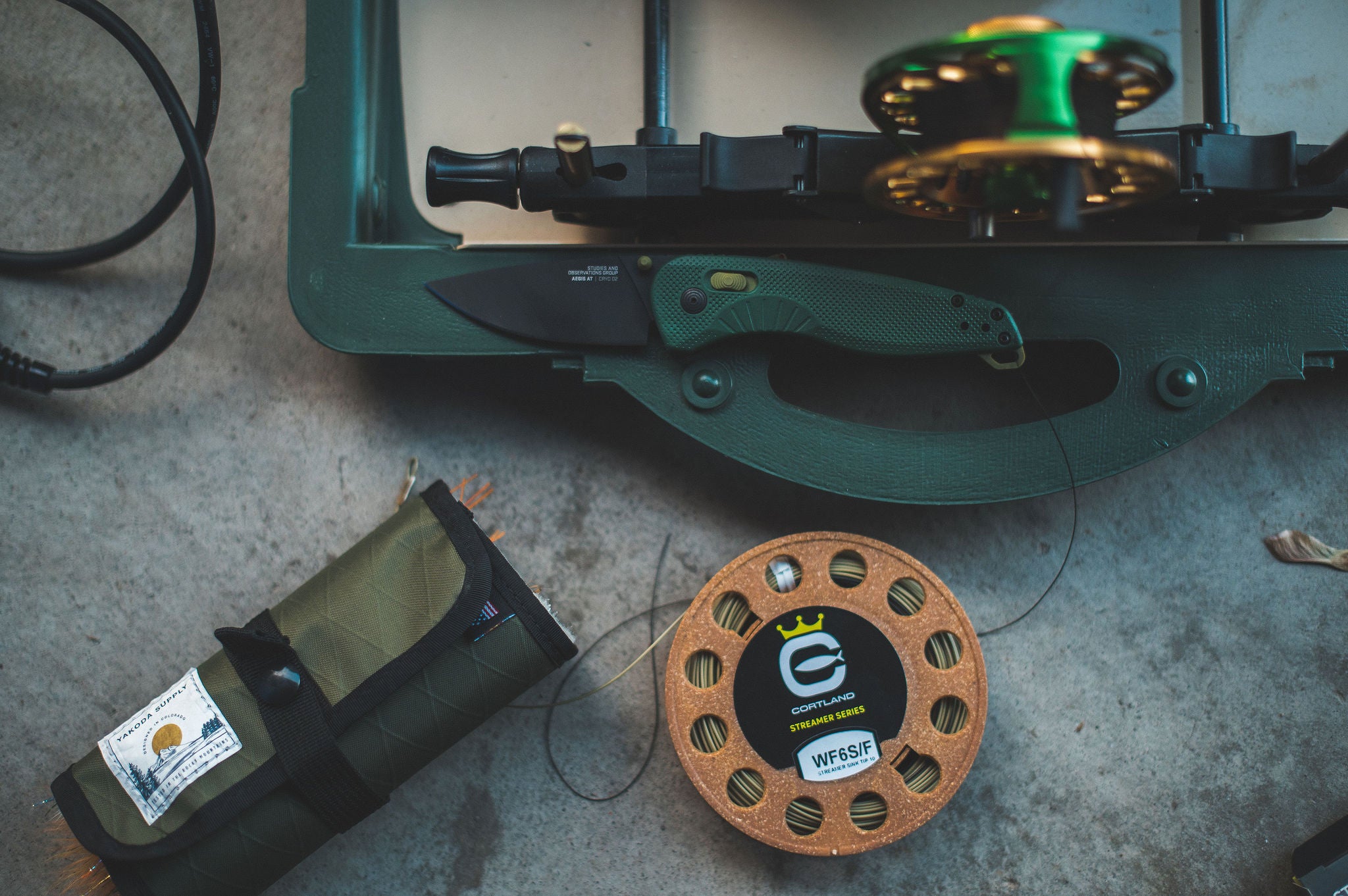
The Warehouse
In order to stay at the top of our game as a fly fishing and braided line company, we need to clear space and make room for the next advanced fishing products. Doing so will improve anglers time on the water and that has always been our #1 goal. Shop Past Season Products. Warehouse items are not...
I just took this advice, thanks!Or, just get the [Seek] type 5 and fill your gas tank and go fishing.

The Warehouse
In order to stay at the top of our game as a fly fishing and braided line company, we need to clear space and make room for the next advanced fishing products. Doing so will improve anglers time on the water and that has always been our #1 goal. Shop Past Season Products. Warehouse items are not...www.cortlandline.com
So Billy, how do you recommend searching out where to drop you line?Dont forget the deep vertical method. With electronics it can be surgical.
What Billy says below - he's becoming a wizard at this (do a little search on his Garmin posts). I don't often fish the naked line midge technique I suppose because I like Seegercator fishing but: I did have some interesting takes fishing a zuchinni midge on a 20' leader. I was in maybe 10 feet of water fishing a drop off, it was fun when it worked.Thanks, everyone! After researching I'm definitely going to give the different methods a try. Definitely going to try naked line chironomid fishing as I read that feeling the takes on those is pretty fun. @Matt B, thanks for the link! Sweet sale going on.
Fly lines a just like rods, reels and boats: one is never enough.
Last edited:
Seek Type 5 5/6. I'm tempted by the Compact Float, but didn't buy it (yet).Good call, especially since you live on a lake! What lines did you decide to grab?
“Garmin posts”??What Billy says below - he's becoming a wizard at this (do a little search on his Garmin posts). I don't often fish the nake line midge technique I suppose because I like Seegercator fishing but: I did have some interesting takes fishing a zuchinni midge on a 20' leader. I was in maybe 10 feet of water fishing a drop off, it was fun when it worked.
Fly lines a just like rods, reels and boats: one is never enough.
“Garmin posts”??
Mixed bag lake (with November update)
Spent the last two days hitting a few of our mixed bag larger lakes. These lakes can be intimidating and to be honest I don't fish them as much as I should. However the variety of fish and quality of a fall bite proved to make them worth it! I started day one fast with a strong fish that just...
wetline dave
Steelhead
The type you use depends on what you want to do. If you want to fish a rising and sinking type of presentation by retrieving line then a type 3 would be a good choice. If wanting to stay deep then a 6 or 7 would be the call.
Dave
Dave
Seek Type 5 5/6. I'm tempted by the Compact Float, but didn't buy it (yet).
Zak,
I have a Compact Float 6/7 that I fished once. $35 if you are interested.
SF
I generally carry a floater (and indicators), an intermediate, and a type 5, all rigged up and ready to go on my kayak. Also have a 7 to re-rig one of those rods if I need to really go deep, but I really don't like fishing such lines unless absolutely necessary.
A Garmin Striker 4 fish finder was a real game changer for me...depth, bottom structure, and fish population general location saves so much time. It's easier to be patient and let a slower sinking line get to depth when you know they're down there...and a good many strikes occur on the way down if you're alert.
I like the Cortland Competition sinking lines with the bright depth band hang markers (let's you replicate what is working); they cast well, and don't coil even in cold weather.
A Garmin Striker 4 fish finder was a real game changer for me...depth, bottom structure, and fish population general location saves so much time. It's easier to be patient and let a slower sinking line get to depth when you know they're down there...and a good many strikes occur on the way down if you're alert.
I like the Cortland Competition sinking lines with the bright depth band hang markers (let's you replicate what is working); they cast well, and don't coil even in cold weather.
Last edited:
Nobody has really brought up the link between sink rate and retrieve speed; basically, if you are going to retrieve slowly you need a slower sinking line to fish at the same depth than if you are stripping fast. You can’t slow strip with a type 7, because it will keep sinking and get stuck on the bottom, you can do it with a type 3 and stay down at 20’ if you go slow enough.
For me, a type 7 is used as a trolling line or with a buoyant fly. If I had only one sinking line for stillwater, it would be a type 3.
For me, a type 7 is used as a trolling line or with a buoyant fly. If I had only one sinking line for stillwater, it would be a type 3.
Depends what you're fishing for! I use my type 7 when I want to be right on the bottom, especially with a bouyant fly, like a booby or floating dragon nymph.Nobody has really brought up the link between sink rate and retrieve speed; basically, if you are going to retrieve slowly you need a slower sinking line to fish at the same depth than if you are stripping fast. You can’t slow strip with a type 7, because it will keep sinking and get stuck on the bottom, you can do it with a type 3 and stay down at 20’ if you go slow enough.
For me, a type 7 is used as a trolling line or with a buoyant fly. If I had only one sinking line for stillwater, it would be a type 3.
Or if I'm targeting walleye with something jiggy
Last edited:

